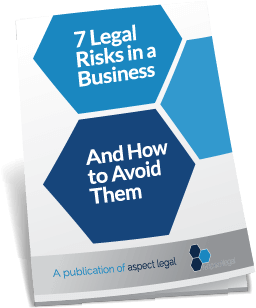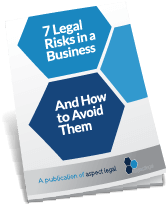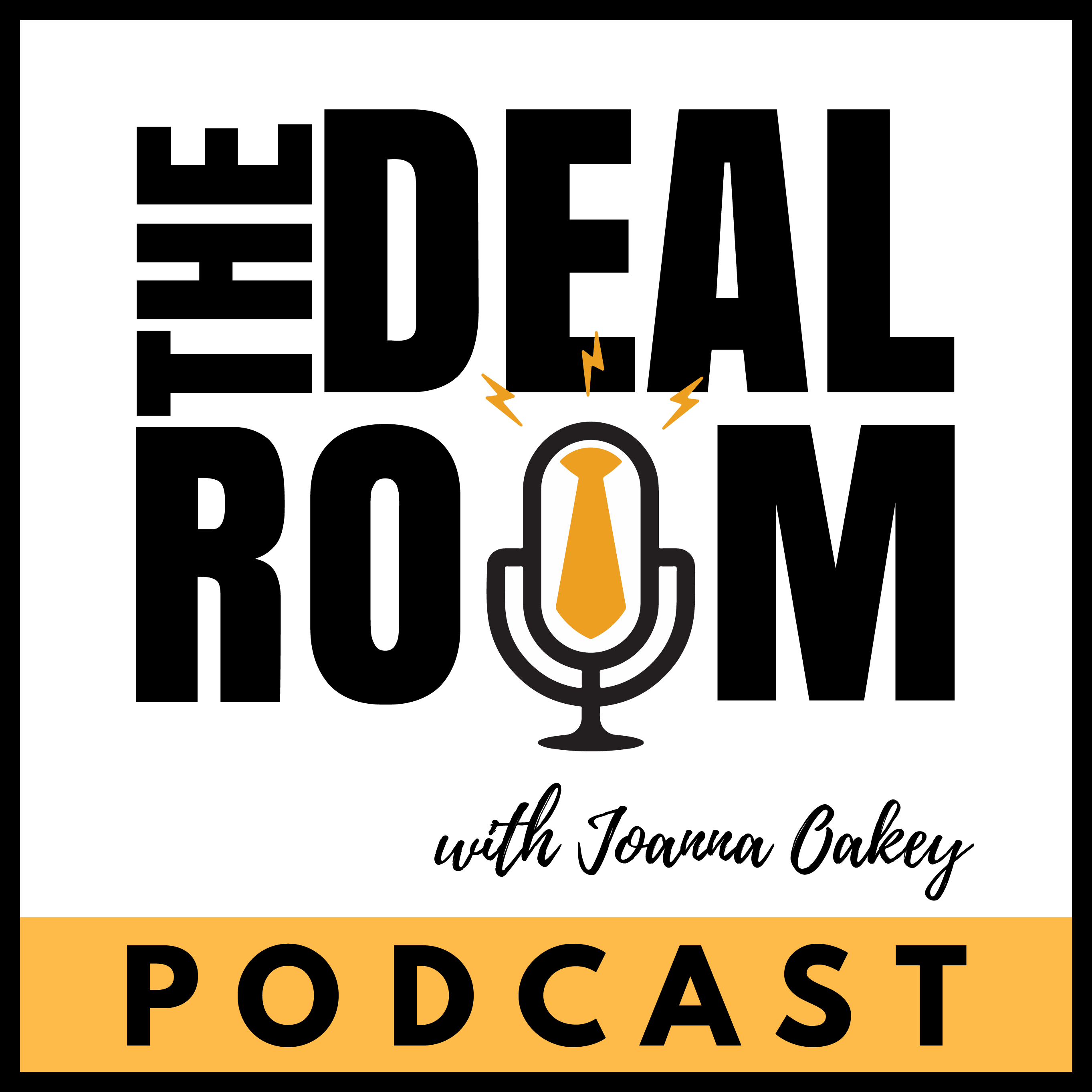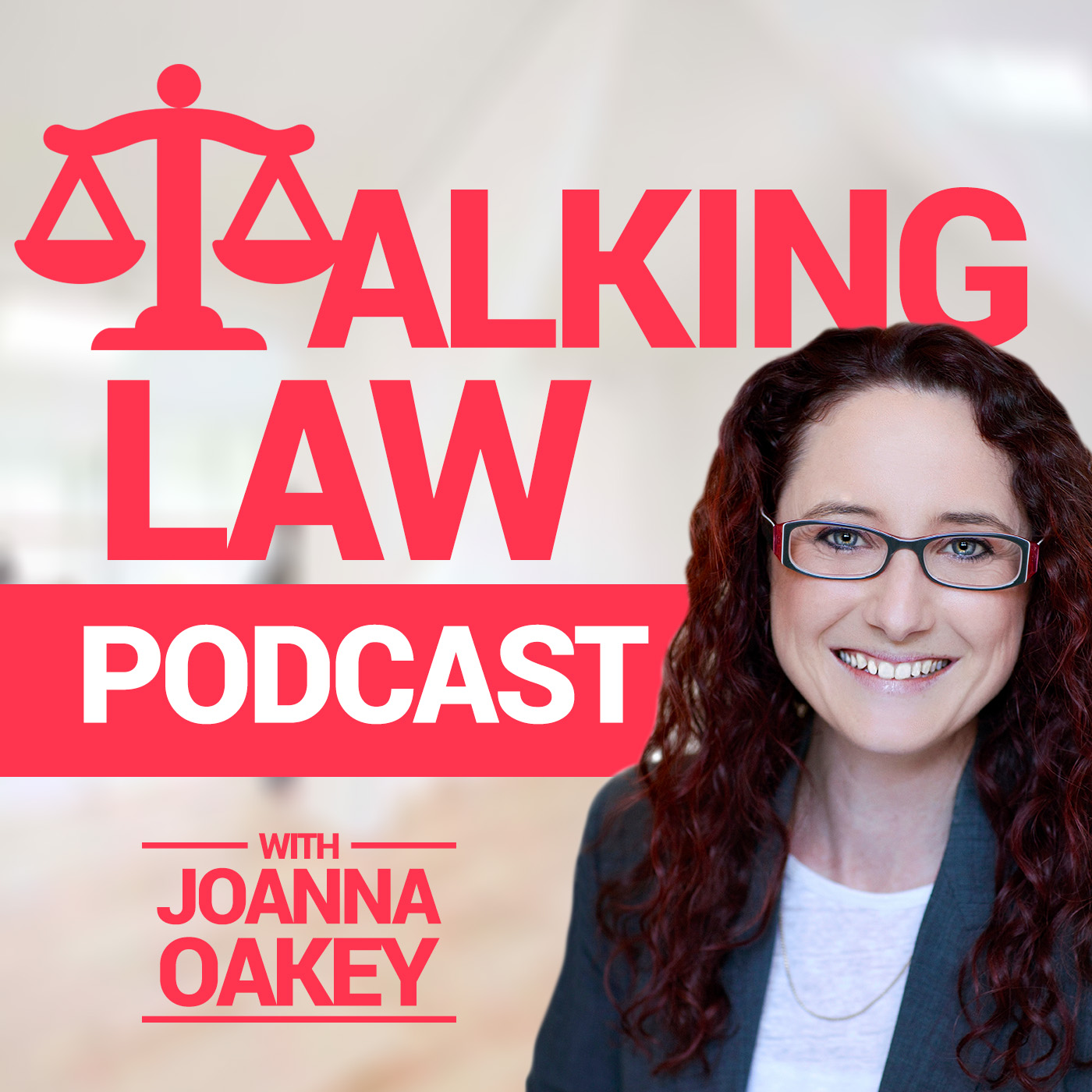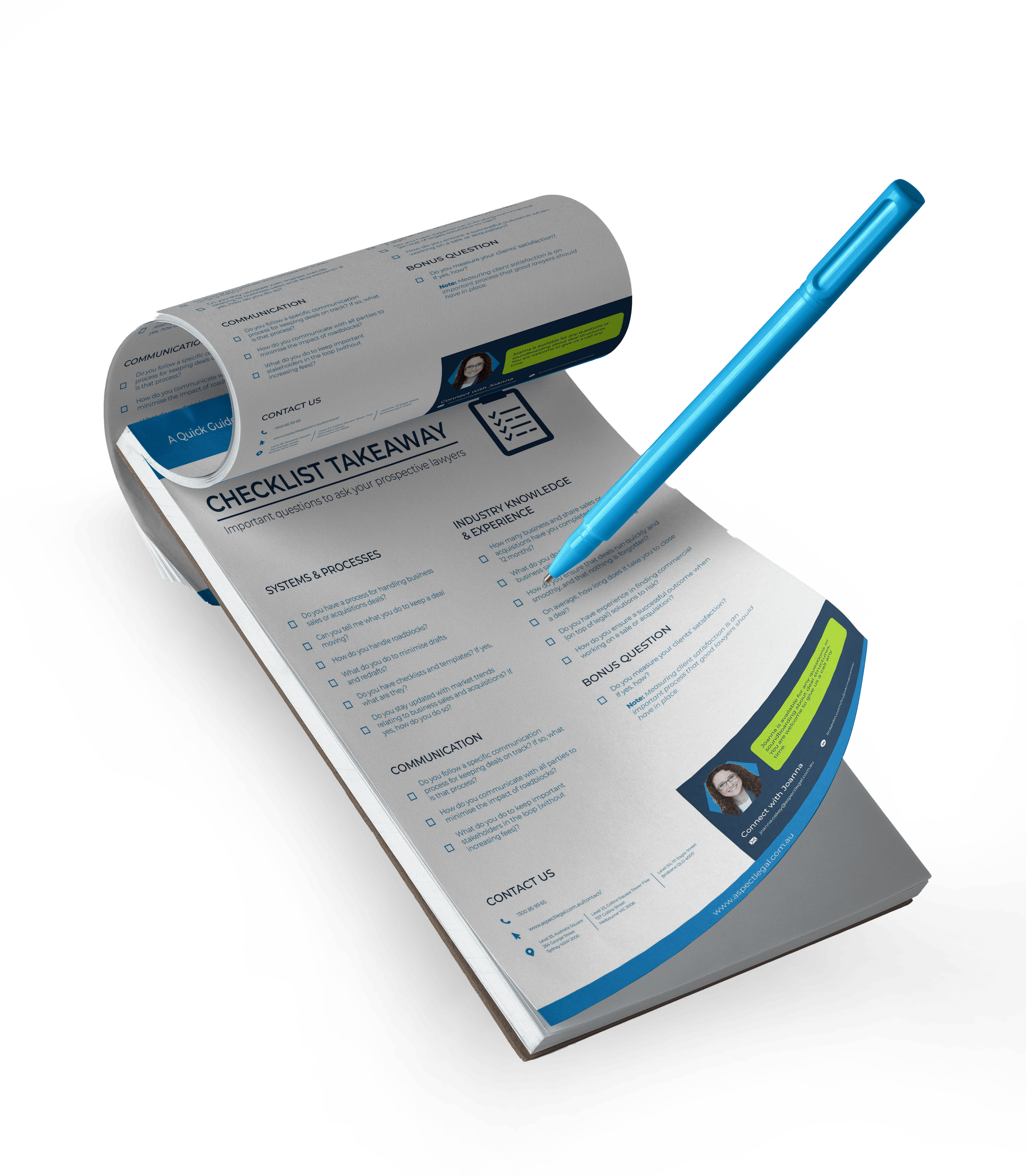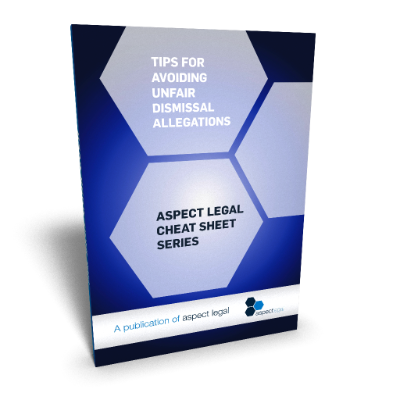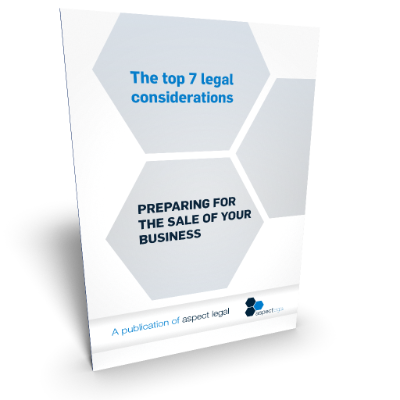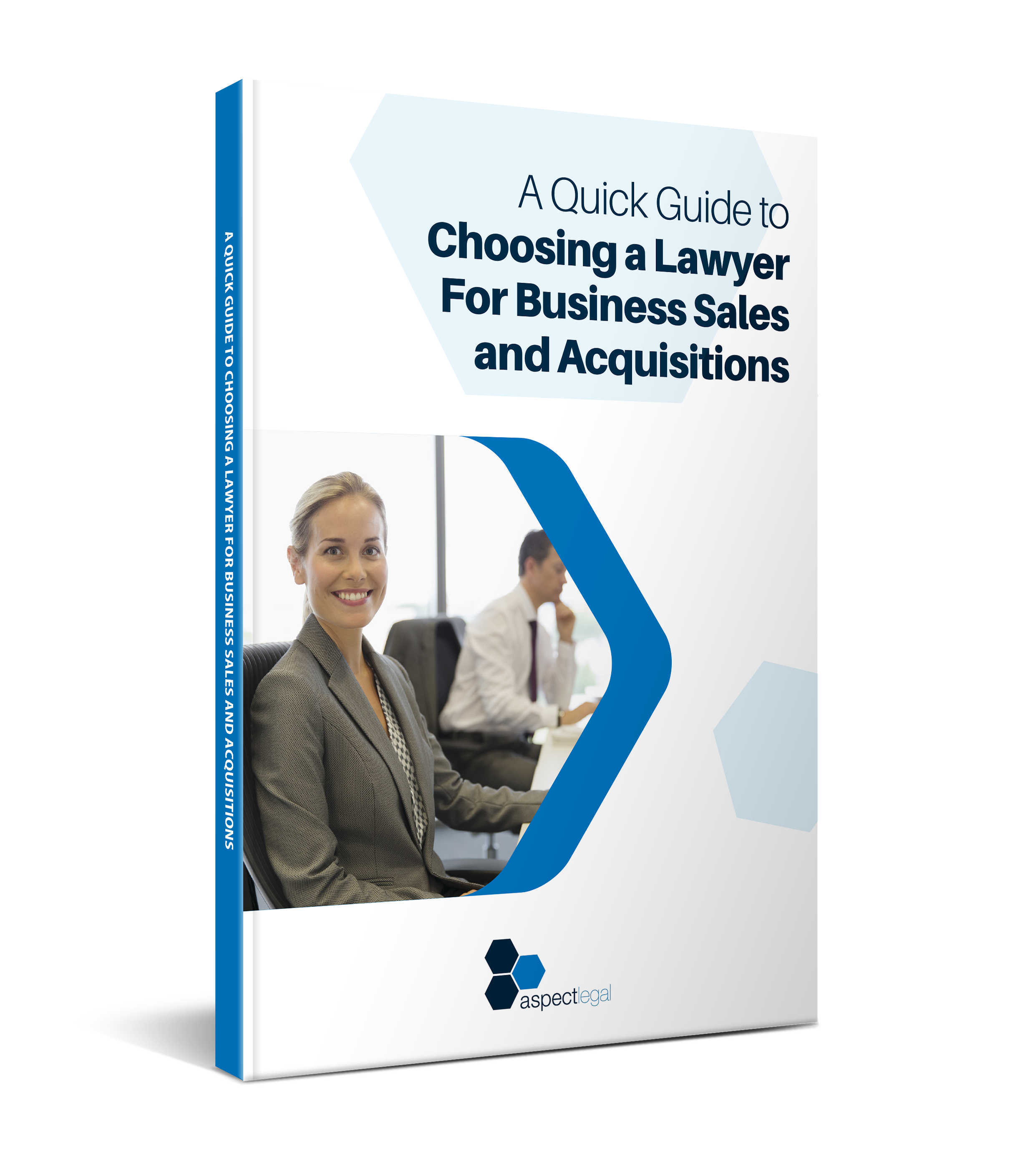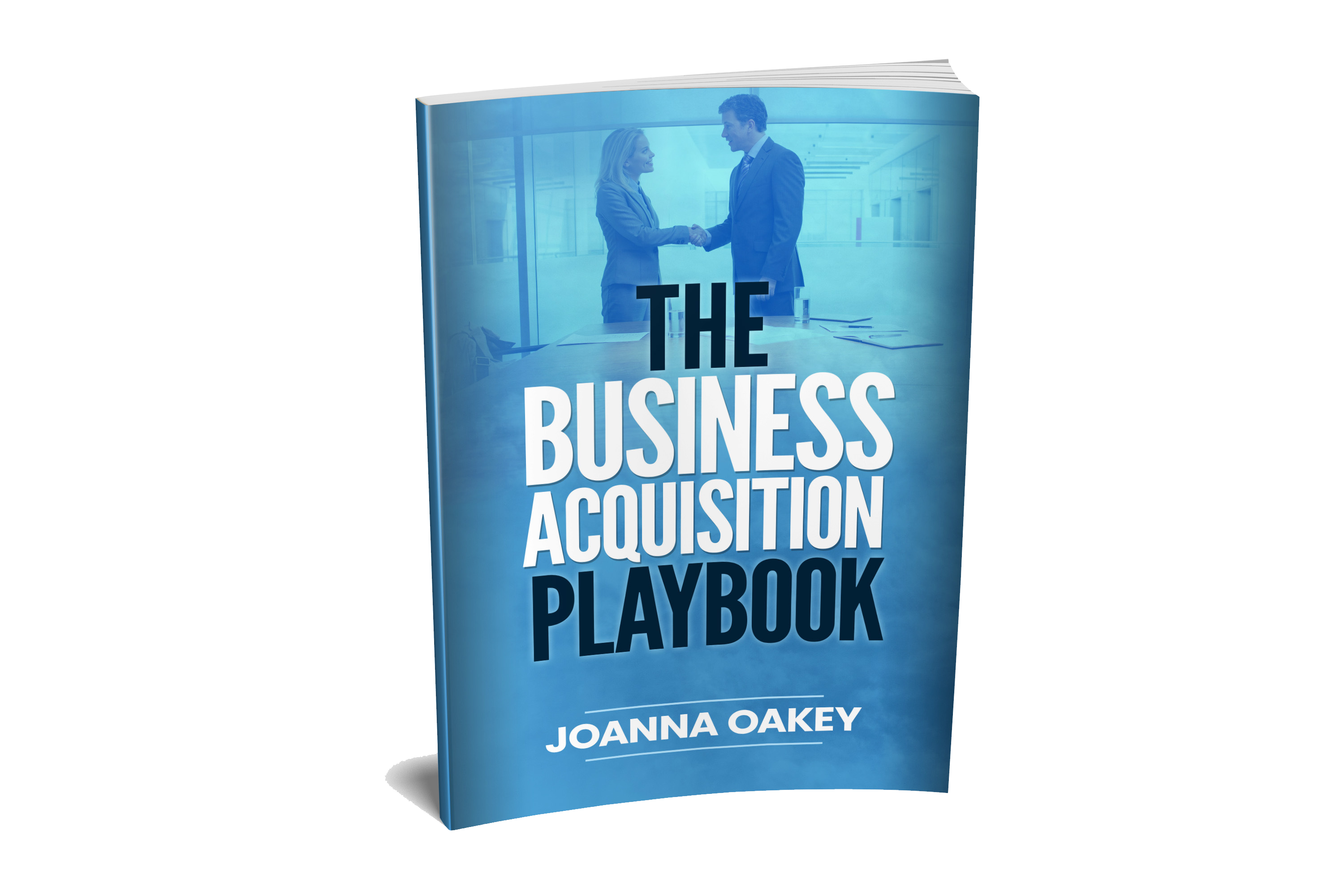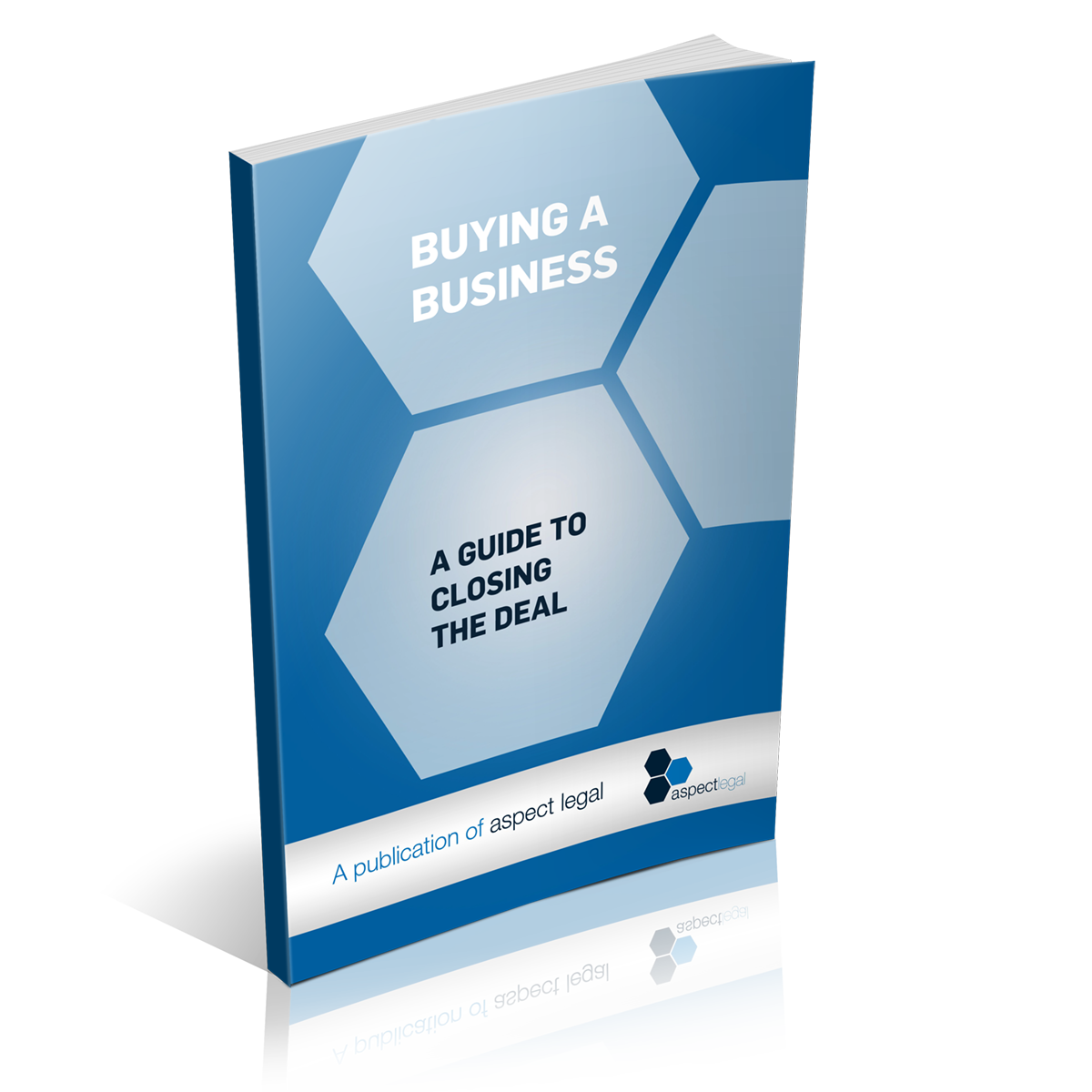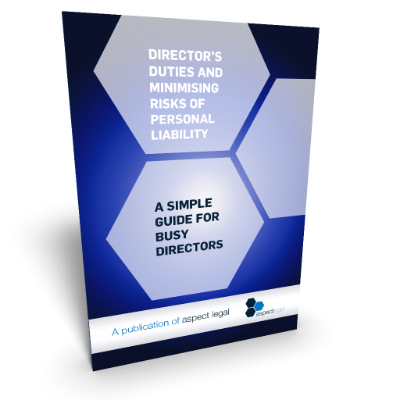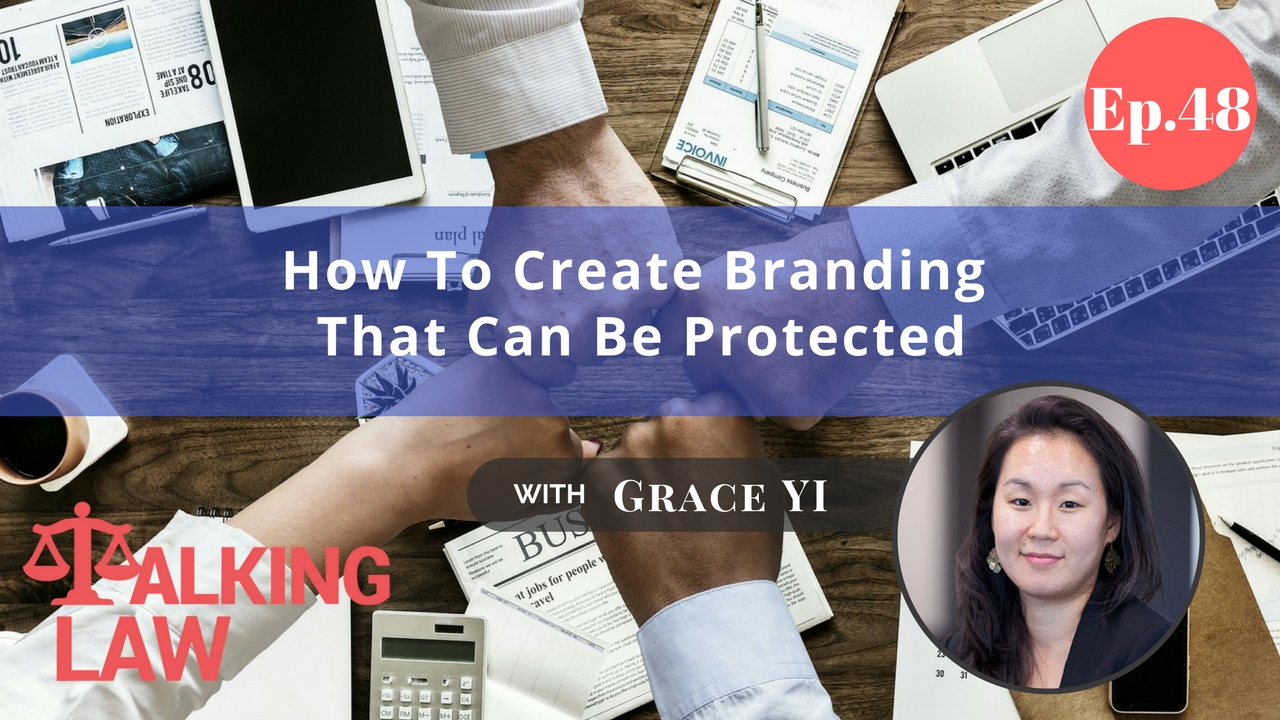
We bring back Grace Yi to talk about this interesting and useful topic on brand protection. In this episode, we break down each element to make sure you get a mark that can be registered and is protectable.

Episode Highlights:
- Why are we talking about trade marks again?
- Why is brand protection important?
- What makes a mark descriptive?
- Why do descriptive marks fail registration?
- What’s good to include in your mark
- What’s not good to include
- Other types of marks you can register and protect
- Get a lawyer involved early in your brand development phase
- Our most requested article on trade marks!
- Wrap up
Joanna: Hi, it’s Joanna Oakey here and welcome back to Talking Law brought to you by the commercial legal practice, Aspect Legal.
Today we have back as a guest on our show, Grace Yi who heads up our trademarks division over at Aspect Legal.
Hi Grace, thank you so much for coming on board again today to talk about this very interesting and useful topic on how to create branding that can be protected.
Grace: Good to be here Jo. I’m excited to talk about trademarks with you.
Why are we talking about trade marks again?
Joanna: Let’s first start off with why we’re talking about these topic. As I said, today we’re talking about how to create branding that can be protected and the reason that you and I really wanted to have an episode all devoted entirely to this area is because it’s a question and an issue that pops up again and again, right?
Grace: Absolutely. And I guess it’s really good to have in the back of your mind what it is from a legal point of view that makes a trademark more likely to be able to be protected, especially when you’re at that brand development phase and it can be quite interesting to know that the sorts of things that we’re looking for as lawyers is completely different maybe to what someone who is more in the creative side of things might be looking at. So let’s get into it.
Joanna: That’s a great point and I guess the issue quite often comes when clients and often they may not be clients of ours that time, but organizations go to a creative team to help them create a brand. But the creative team or the accountant who is registering a name for them or if they themselves are sitting at home or in their office trying to come up with the brand. The one thing that they’re often not thinking about is whether this brand can actually be protected.
Maybe we should step back first and say well why do we care? Why would they care? Why would they want branding to be protected in the first place? So let’s check that out for a minute.
Why is brand protection important?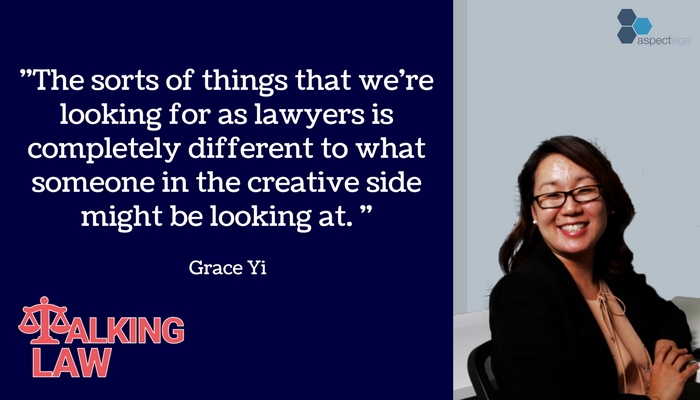
Grace: Yeah, that’s a good point because I guess some people they might not care. The reason why you would care is if your building up your business and building up that goodwill and people are identifying you with your name, that starts to become very valuable to you and it can cause a lot of problems if you have competitors out there who use similar elements in their name. Because then there’s confusion. If It erodes the value that you have in your own name and then there’s also value when you go to sell your business in having that trademark registered because it can add that to the dollar value of the saleable price of your business.
Joanna: Because now it’s a proven asset of the business. And of course there’s all of these other elements that relate to the commercial use of a brand once it’s been registered and our show notes we’ll put a link through to ways that you can get yourself a trade mark information pack if you’re interested in finding out what the benefits are of trade mark registration and why you might bother with trade mark registration. So I think we’ll throw that in the show notes as well so people don’t have to take this all in, in one podcast.
Generally speaking, whether you’re a small business or a large business whether or not you’re coming up with the brand for a product or the brand relates to the business as a whole, brand protection is an important way for you to stop competitors from using a mark that’s too similar for similar sorts of goods or services that you’re selling under that mark. And I think in essence that’s why many organisations seek to protect their brand and lock in their marketing spend basically.
Grace: Absolutely.
Joanna: Yes go ahead.
Grace: I was just going to add the flipside of that as well is that you’d want to look at this issue when you’re at that brand development stage because there’s the other side of the risk, what I am trying to say is you might actually be at risk of infringing somebody else’s brand in coming up with your name and you’d want to know that risk before you walk in to that potential legal minefield.
Joanna: That’s exactly right. Trademarks really help you protect a brand once you have it, but also protect you against the threat of other organisations making some sort of claim that you’re infringing their mark. So I guess coming back now, how do we create branding that can be protected?
We’ve talked about why you might want branding that can be protected now let’s talk about some of these issues that we see again and again in branding that relates to brands that just can’t be protected and I’m thinking here Grace I’m sure you’ve got loads and loads of examples that we’ve seen in over the many years that we’ve been working together in this area. But I think one of the most common areas that pops to mind for me is the really descriptive mark. We see that a lot, don’t we? And the problems that occur with descriptive marks.
Don't make these legal elements the last consideration. Joanna Oakey #Branding #Trademarks Click To Tweet
What makes a mark descriptive?
Grace: Yes, and I can see why people are drawn especially small businesses, why they’re drawn to a really descriptive mark because if you’re starting up a business and you might be an accountant or you provide cleaning services and you want to communicate that really quickly, it’s really simple to just name your suburb and name the services you provide because it just communicates very quickly where you are and what you do but they’re exactly the sort of name that’s not going to be able to get registered as a trade mark, as a word mark, because it’s just too descriptive, it’s too generic. And a lot of people find that really surprising. So it might be really good to talk through now what it is that makes a mark generic or distinctive.
Joanna: Absolutely let’s do that and just before we launch into that maybe we should say that part of the issue is not just that it’s hard to get protection for very descriptive or generic names but most importantly it’s very hard to stop anyone else from using whether you do or don’t have a trademark registration. It can be very difficult to stop anyone from using anything similar. Let’s launch into examples, what is a descriptive or generic mark and why is it an issue?
Grace: Yeah. I’d like to say that the quick way of testing if my mark’s too generic, is to ask yourself whether the words that are contained in your mark, whether they describe any characteristic of the goods or services. If they describe the nature of the services or goods that you’re providing or the quality or where they come from, those sorts of things then it can be quite clear that the words are too generic.
When we talk about marks of being generic or distinctive, we’re talking about a spectrum. We might have mentioned this in a previous podcast but we’re talking about a spectrum, it’s never black and white. It is somewhere on a spectrum and at one end you’ll have highly generic, highly descriptive words and we don’t want the marks to be up that end. And up the other end we have highly distinctive and unique marks and words and most marks will fall somewhere on that spectrum but you want to fall sufficiently enough up the distinctive end that you’re able to be granted a trademark registration.
Why do descriptive marks fail registration?
Grace: I might just give some examples of what the sorts of words might be that would fail for being too generic. Some examples that come to mind would be things like white creamy milk if your product is milk because both the words white and creamy describe the milk or if you’re a dentist calling yourself the good dentist or maybe the suburb and then dental surgery. So those sorts of words are too descriptive and then words like perfection or excellent those sorts of words fail because they praise your goods and services and so when we say that these words fail, the reason why they’re failing and I think it can be helpful to know the reasoning behind this sort of thing.
The reason why these words will fail is because once the trademark office grants anyone a trademark registration essentially they’re giving them a monopoly over those words which then gives them the exclusive use of those words in relation to those goods and services. In effect if they gave someone the ability to own the word white creamy milk for milk, it would give them the ability to stop any other trader from using the words white or creamy even if it’s in their marketing to describe their milk products. So those sorts of words should be freely available to anyone when they’re referring to their goods and services. So this is what the reasoning is.
Joanna: All right, great. Okay. I think we’ve sort of set out the issues and if you’re involved in the creative development process at all for brands or you’re a business yourself and you’re looking at either developing a brand or rebranding for a business hopefully it’s been clear to you here that one of the elements that you need to try and stick away from is generic sort of descriptions and of course marketers love the concept of generic descriptions often because it makes it really clear what your brand is talking about but I guess we say from a legal perspective, maybe let your tagline do some of that work in tying back that descriptive element. Come up with a name that is protectable and then use a tag line if necessary, to then link that back to exactly what you’re doing. So let’s talk about what’s good to include in your branding in order for it to be distinctive.
What’s good to include in your mark
- Coined or invented words
Grace: Yeah. So the sorts of marks that are up that highly distinctive end of that spectrum are completely invented words so words that don’t exist in the English language or any language at all and if they’re completely invented words then obviously nobody else is using that word. And so no competitor would have a need to use that word and those sorts of marks are immediately protectable. So those sorts of words that come to mind are things like Adidas where it’s a combination of the initials of the founders of Adidas or words like Skype which means sky peer to peer. So these sorts of words that are invented are highly distinctive.
Joanna: Great. Okay, alright. So coined or invented words are good! Big tick there if you can come up with a coined or invented word then this sort of word is going to be immediately protectable. So big tick here for coined or invented words.
What’s the next element that organisations could think about when coming up with branding that is good from a distinctive viewpoint?
- Arbitrary words or expressions
Grace: Yeah. We call them arbitrary words or expressions so it ties back into what we were talking before about generic words were it’s highly descriptive, these arbitrary words are really distinctive because these words have nothing to do with the goods or services that they’re providing under that brand.
A common example that I give is Apple because everybody knows Apple, and Apple obviously has nothing to do with computers or phones so it’s highly distinctive. Another computer or phone manufacturer wouldn’t have need to use the word apple to refer to their products.
Joanna: Or google for a search engine. That’s another one, right? It has a meaning but completely its meaning is a number, it’s a completely unconnected to meaning anything to do with internet search.
Grace: That’s right. So those sorts of marks are immediately protectable.
Joanna: Great. Big tick here for arbitrary words, expressions or slogans. They’re good. So bear in mind if you come up with an arbitrary word or an expression or a slogan then this is good, you’re keeping in the distinctive territory here. Okay, what else Grace? What else could we think about here?
- An unlikely grammatical construction or misspellings
Grace: So another example might be where you have an unlikely grammatical construction. What we’re meaning here are words where there’s a misspelling and it’s not an obvious misspelling or you’ve got an unlikely way that you put the words together.
So for example we’ve got Groupon which is a combination of the words group and coupon so they convey some sort of meaning. But it’s an unlikely way of combining those two words to convey that meaning.
Joanna: Great okay. This is a little bit like our coined or invented words here but we’re saying it doesn’t have to be completely invented, it might be a pairing of the beginning of one word, the end of another or something like that just like Groupon did. Group coupon.
If you’re coming up with these unlikely grammatical constructions, once again, big tick for distinctiveness of course when I’m saying here big tick, of course the next step is always doing a trademark search to make sure no one else is using it. But here we’re talking about what inherently makes a mark likely to be distinctive and protectable instead of descriptive or generic. Okay. What other words here, Grace?
- Suggestive words
Grace: Yeah. So another category of words that are immediately protectable are suggestive words and this is where you can really be creative and put your creative hat on because you can come up with words that contain an element of descriptiveness or a hint of descriptiveness but it’s vague and so they usually involve lateral thinking and secuity thinking and this shimmer and or surprise there could be a pun in there. And I guess people don’t gravitate to these sorts of marks because you need to then really educate your market to know what it means.
These sorts of marks are highly distinctive so an example that we might give here is the mark Twitter because it describes the services as providing a short burst of inconsequential information and they use that image of a bird to type back into that word Twitter. But in and of itself Twitter doesn’t actually describe the services that they’re providing in a direct way. So this sort of mark is immediately protectable.
Joanna: Okay, alright. Great. On all of these elements that we’ve been talking about, not only are these marks protectable but given the creativity of them, quite often they make it a lot easier for you to be able to stop anyone from using anything similar in relation to your goods or services so it’s really good to adopt this sort of philosophy in naming if you’re going to pour a bit of money into your brand and you really want to distinguish your goods or services from those of the competitor.
Grace: Yes, that’s exactly right.
Joanna: Okay alright. I think we’ve got one other area here that we generally talk about as being an example of the sorts of things that can potentially be good to include in your branding. What’s this last area that we talk about Grace?
- Unusual names or surnames or company names
Grace: Yeah, we talk about names and surnames or personal names or company names. I guess because a lot of people do want to use their own name for their business. And what we say is that if you’re going to go for a name, it has to be an unusual name. You can’t use a really common name like Smith so it this can really depend on a case by case basis because some names are just more well-known than other names.
And this can sound a bit technical but when the trade mark office does examine a trade mark application for a name they will look at the electoral roll and there’s a cut off in terms of the number of people within Australia on the electoral roll that have that name especially surnames we’re talking about there but it can be distinctive. So for example we’ve got the mark Naji which was named after the founder Julius Naji and the surname is just not that common so it can be a distinctive mark.
Joanna: Ah ha. Okay alright. I think we’ve given some really good tips here in relation to what’s good to include in your branding if you want something that you can nearly stop competitors from using something similar to and in order for you to be in good stead of getting a trademark registration and therefore protection for your mark assuming no one else is using something similar.
Let’s take a break
Let’s take a short break. When we get back, Grace talks to us about the elements that you should avoid including in your brand name in order to keep it distinctive and protectable. We’ll also drill into the importance of making sure the legal considerations are dealt with early on in the brand development phase. And finally, we’ll close this episode by linking you through to our most requested article on trade marks so you can grab a copy of it too.
And that’s next, I’m Joanna Oakey and you are listening to Talking Law – a podcast brought to you by our commercial legal practice Aspect Legal.
Our Trade Mark Services
Our team at Aspect Legal specialises in providing trade mark registrations, and general advice on brand protection and commercialisation for companies and individuals based anywhere in the world.
So if you work in creating brands or logos for business, or if indeed you are a business needing assistance in protecting your brand, we offer a free 15-minute consultation with one of our lawyers to discuss how we can help you or your client.
We also provide a free trade mark pack, if you want to get a bit of an understanding of the process and the timelines.
But of course, we do more than just trade mark registrations! We work with our clients on a range of issues to assist them in making their trademarks work for them. If you want to know more, contact us at [email protected]u – or head over to our website at aspectlegal.com.au to book in a free consultation with one of our trademark lawyers.
Welcome back
Welcome back! Earlier, Grace talked about the importance of brand protection. We also discussed the concept of descriptive marks and the reason why these types of marks fail registration. Then we ran through a list of elements that help make your brand more distinctive.
Now let’s jump back into our conversation with Grace and talk about the flip side of what we talked about before the break. So let’s talk about the elements you ought to avoid in your brand names.
It's not nice to be the bearer of bad news. Grace Yi #Branding #Trademarks Click To Tweet
What’s not good to include
Joanna: Let’s talk about now on the flipside what isn’t good. I guess the first one, we always have to talk about is the purely descriptive or generic marks and we talked a little bit about that right in the beginning of this podcast where we suggest that you keep away from geographical origins or characteristics of the goods or services like the good dentist you’re talking about Grace.
Grace: Yes. So those sorts of words, don’t go there. We’ll have bad news for you.
Joanna: And it’ll be hard to stop copycats that’s the reality as well.
Grace: That’s right.
Joanna: All right so so we’ve covered off purely descriptive or generic marks. What else isn’t good?
Grace: Yeah. So it’s a common thing and I’ve mentioned that before but so common surnames, they’re no good. They’re too hard to protect. And as I mentioned it will depend on the number of people on the electoral roll.
Another sort of mark that is hard to get are when you have acronyms or numbers in your marks or short combinations of letters and numbers. If that acronym has a really obvious meaning in your industry or market and everybody knows what that acronym means, again because it’s too descriptive it can fail and not be registrable for that reason.
Joanna: And look I think the mere fact that we’re talking here about short combinations of numbers and letters on their own also means that quite often even if you could past the distinctiveness requirement in relation to the mark, you’re probably dealing with other marks on the trade marks register that are going to be considered to be too close anyway because there’s only so many permutations and combinations of short combinations of numbers and letters that can be arrived at. If you can get them registered you still can’t because they’ll be blocked by other marks on the register.
Grace: That’s right. That’s a possibly another podcast in and of itself to talk about – the issue of having marks on the register that are too similar.
Joanna: Yeah absolutely because there are ways to deal with this and we deal with this all the time Grace and it’s all about filing strategy but you need to understand what you’re doing before you go down that path otherwise you’re just throwing money into useless applications. And even exposing yourself once you’re on the register as applying for a mark to possible infringement actions if someone else feels that you’re too close.
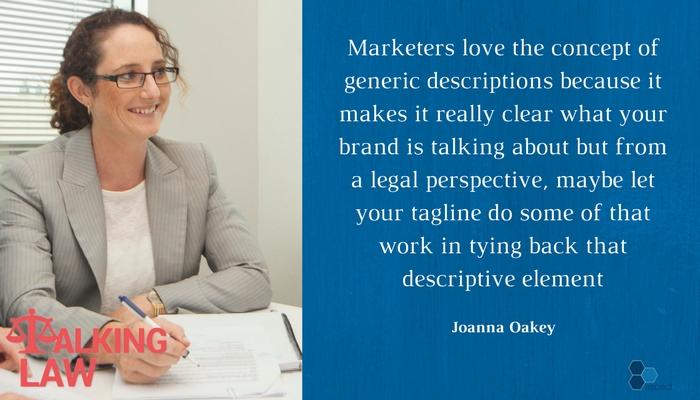
Other types of marks you can register and protect
Grace: I just thought I’d mention that all of this, what we’ve been talking about in terms of distinctiveness and descriptiveness mark, we’ve been purely talking about it from the point of view that the mark in question is a word mark but the same sort of considerations can apply to other types of marks because of course in case we’ve never talked about this specifically you can have all sorts of different types of trademarks so you can have an image that can function as a trademark and even some more unusual types of trademark are colours and sounds and aspects of packaging which are very unusual but the same considerations would apply.
For example, if we’re talking about an image we would still be looking at that spectrum is it highly descriptive or is it distinctive and for example if you had a very ordinary image of a car with just plain borders, something like that, so something very generic it might not be able to be registered for a car sale business. The considerations might be slightly different but it’s the same general concept.
Joanna: And I think that’s a really good point. That’s an excellent point here in relation to logos because you’re right we have been talking about words here but a high percentage of the marks that we deal with registration of have a strong component of a logo or some other mark, some other element that contributes to the mark. Certainly it’s important for organizations to understand what they’re doing as they’re creating the logos as well as the names that go together to create the brand and the mark for a business.
Grace: Yes, that’s right. Lots to think about.
Joanna: There’s a lot to think about. I think let’s just address the issue here that it sounds very complicated. We’ve just talked about a lot here about what’s good and bad in branding and I think quite often it can be a confusing area when an organisation is trying to come up with a brand or a new brand, rebrand for either a product or a business.
Get a lawyer involved early in your brand development phase
Joanna: Often there’s a lot of considerations that need to be made. But I think our point is don’t make these legal elements the last consideration. Because it just costs everyone time and money. If you leave these legal considerations right to the end and really the best way to do it is to team up with your legal team.
We work with a lot of creatives in helping them get clearance for the concepts that they’re coming up with so that the end customer or client is only being provided with the final concepts that actually could be chosen, could be protected, won’t end them in some sort of litigation for a trademark infringement action. We have so many stories don’t we Grace of clients coming to us, new clients coming to us and we find that they’ve spent a lot of money in concept development on concepts that just will either land them in trouble or just won’t be prepared for them so they won’t be able to protect that marketing spend.
Grace: Yeah and it’s not nice to be the bearer of bad news.
Joanna: We don’t like it. We want to be the good news beacons. That’s right.
Grace: If only all creative ad agencies had a lawyer that they could speak to and just say could you just have a quick look at these names and give us your feedback because we’re looking at it from a completely different perspective. I guess we all need to work together because we should be involved at that early brand development stage because we can give you some really valuable insights. I guess if you are that creative group to give that value to your client or if you’re creating the name for your own business we can really help you at that early stage to come up with a name that is less likely to have issues down the track.
When we talk about marks being distinctive, we're talking about a spectrum, it's never black and white. Grace Yi #Branding #Trademarks Click To Tweet
Our most requested article on trade marks!
Joanna: Yeah, exactly. All right. Good. Well thank you so much for your time here Grace. We talked about this area of creating branding that can be protected as I said in the beginning because we are asked about it all the time.
We have an article where we set out each of these elements and we’re referring the show notes to this article because the article also creates a little bit more detail and it’s a good sort of checkbox exercise for you if you’re involved in creating branding either for your own business or if that’s a service that you provide for your customers. We’ll link to that in the show notes and I think Grace you’ve told me that this is one of the most requested articles that we’ve produced. Is that’s right?
Grace: Yes, it is.
Joanna: We feel good at getting the message out there because we really prefer to be the bearer of good news rather than bad news. And once people have poured a whole heap of money down the drain coming up with marks that will land them in hot water or can’t be protected there’s nothing that can be done other than abandoning the mark and starting the process all again. So hopefully this has given you, the listener, a good outline of the sorts of things that you need to consider in terms of creating branding that can be protected.
Wrap up
Joanna: Thanks Grace for coming on. It’s always a pleasure to have you on the podcast.
Grace: Thanks Jo! I hope everyone found it helpful.
Joanna: Great. Okay. If you’d like more information about this topic, head over to our website at talkinglaw.com.au there you’ll be able to get a free download of this transcript. We’ll also provide some links through to our article on how to create branding that can be protected that has the checklist of things to include that are good and things to avoid that are bad.
And on that page we will also provide links to our trade mark kit. If you’re interested in talking to someone about trade mark services. In the trade mark kit, we provide some documentation that helps you understand what the benefits are of trade mark registration, how the trademark registration process works, and what some of the myths in the trade mark areas because we’re always out here busting myths.
And if you would like, we can also provide you with a free 15-minute consultation with either Grace or any of the other members of our trade mark and intellectual property team.
And finally, if you enjoyed what you heard today please pop over to iTunes and leave us a review.
Thanks again for listening in. You’ve been listening to Joanna Oakey and Grace Yi on Talking Law sponsored by the commercial legal practice, Aspect Legal. See you next time.
